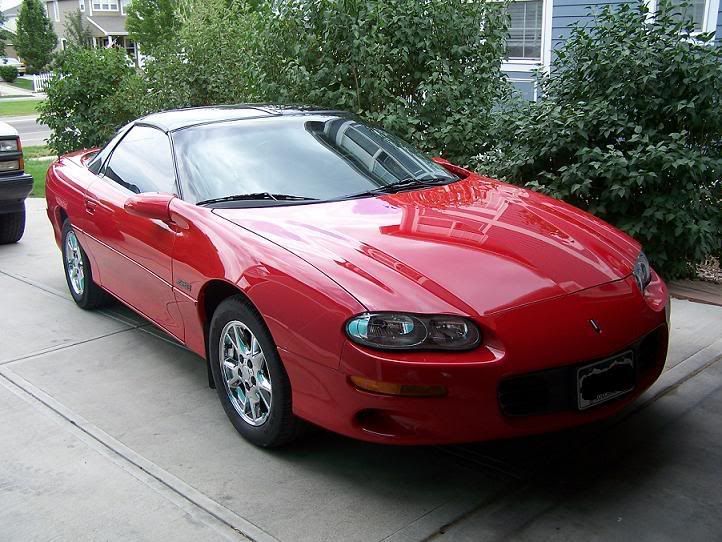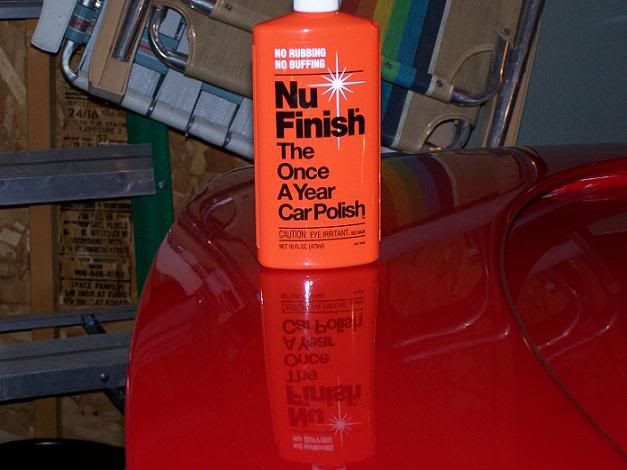Consumer Reports
The difference between wax and polish
At one time, wax and polish described two different products. Polish was a slightly abrasive product, used to buff out small scratches and brighten faded paint. Wax was more of a sealant, used to improve shine and provide a layer of protection. These days, the words wax and polish are used interchangeably by makers of the products. Both describe a product that provides a glossy and protective coating, and may or may not remove oxidation and embedded contaminants. Products labeled cleaner wax may be somewhat abrasive and can actually remove some paint from the surface of the vehicle. Care should be used with these products, especially on newer dark-colored cars. Check your vehicle owner’s manual for advice on cleaning your car.
http://sonus-usa.com/car-detailing-chemicals-guide.html
Paint Polish
Many people mistakenly think that waxing is what makes a car look good. While it's true that a quick coat of wax will make a car shine for a while, it's polishing that really makes paint look sharp.
Choose a polish that matches your car's needs. If your car is new, chances are that it simply needs a good paintwork cleaner with mild polishing capability. If your car has swirl marks or water spots, choose a formula that specifically addresses these issues. Never use a polish that's more abrasive than required to do the job. Make no mistake, paint polishes do remove fine layers of paint or clearcoat. A fine polish can be used for years without noticeably reducing paint or clearcoat thickness. A coarse polish, such as a rubbing compound, will rapidly reduce paint or clearcoat thickness.
Last Step Products (Wax)
The last step in paint finish care is waxing. Wax is a protective substance, natural or synthetic, that provides a thin layer of protection over painted or polished metal surfaces. Waxes can be paste, cream or liquid. A pure wax does not contain solvents or abrasives for cleaning like a cleaning wax. Many people mistakenly assume the term pure wax means that the wax contains nothing but pure carnauba wax or pure beeswax, but this is not the case. All waxes are blends of different substances.
Synthetic waxes, often called sealants, serve the same purpose as natural waxes. However, they are often formulated with superior durability. Most commonly, synthetic waxes contain polymers or acrylic compounds to create a sophisticated surface coating with exceptional gloss and slickness.
Ask any professional or enthusiast detailer which is better, wax or sealant, and you're likely to get something that sounds like a sermon. Detailers, both professional and enthusiast, can be quite passionate about their choice of wax.
Carnauba Wax
Carnauba comes from the fronds of the "tree of life" (Copernicia cerifera) native to Brazil. It is nature's hardest, purest and most transparent wax. Carnauba car waxes tend to produce a deeper, darker, richer shine that is often described as "three-dimensional."
Many enthusiasts and show car owners prefer the shine of carnauba waxes, especially on black, red and other dark colors. Carnauba waxes bead water nicely, absorb the acid content in rain, and hide minor swirls in the paint. My personal favorite is P21S, a true show car wax.
On the minus side, carnauba waxes are not as durable as synthetic waxes. Depending on your climate, a carnauba wax might last between 30 and 60 days. Additionally, some carnauba waxes can be temperamental, occasionally streaking under certain temperature or humidity conditions.
Synthetic Waxes
Made from modern polymers or acrylic resins, synthetic waxes offer excellent durability and ease of application. Quality synthetic waxes have been known to last 6 to 9 months or longer, and typically wipe on and off very easily. Synthetic waxes create a very bright shine and rarely cloud or streak on the paint.
UNDERSTANDING POLISH
Before we can talk about polishing, we need to establish a common understanding of what polish is. The word polish is highly misused throughout the car care and appearance industry.
For our purposes, a paint polish is an abrasive lotion or cream used to remove small amounts of the paint's surface. The cutting ability of the polish will determine the amount of paint removed with each hand stroke or each revolution of a buffer, as well as the resulting finish. A fine polish will create a bright, glassy finish, whereas a coarse polish may cloud the paint's surface. Each polish is designed for a specific purpose (e.g., repair or refine) and application (e.g., hand or machine). Here's how I classify polishes:
Abrasive paper or pad - An ultra-fine grade of sandpaper (1200 to 3000 grit) can be used effectively to level a paint finish and remove imperfections. I mention sandpaper here because it is an abrasive, like all polishes, and it has its place in the polishing chain.
Compound - A compound, often called a rubbing compound, is a cutting polish designed to remove heavy oxidation, some common forms of paint damage and defects, and the scratches created by fine sandpaper.
Polish - A specially formulated blend of components designed to remove minor scratches, surface imperfections, water spots, acid rain spots, light oxidation, and the swirl marks created by compounding with a machine.
Glaze - A very fine polish. Some glazes are safe to use on fresh paint, as they do not seal. A glaze does not have enough cutting power to remove imperfections, but will increase surface gloss.
Pre-wax cleaner - A polish containing chemical cleaners to help remove minor surface contamination and dirt not handled by normal washing or claying.



